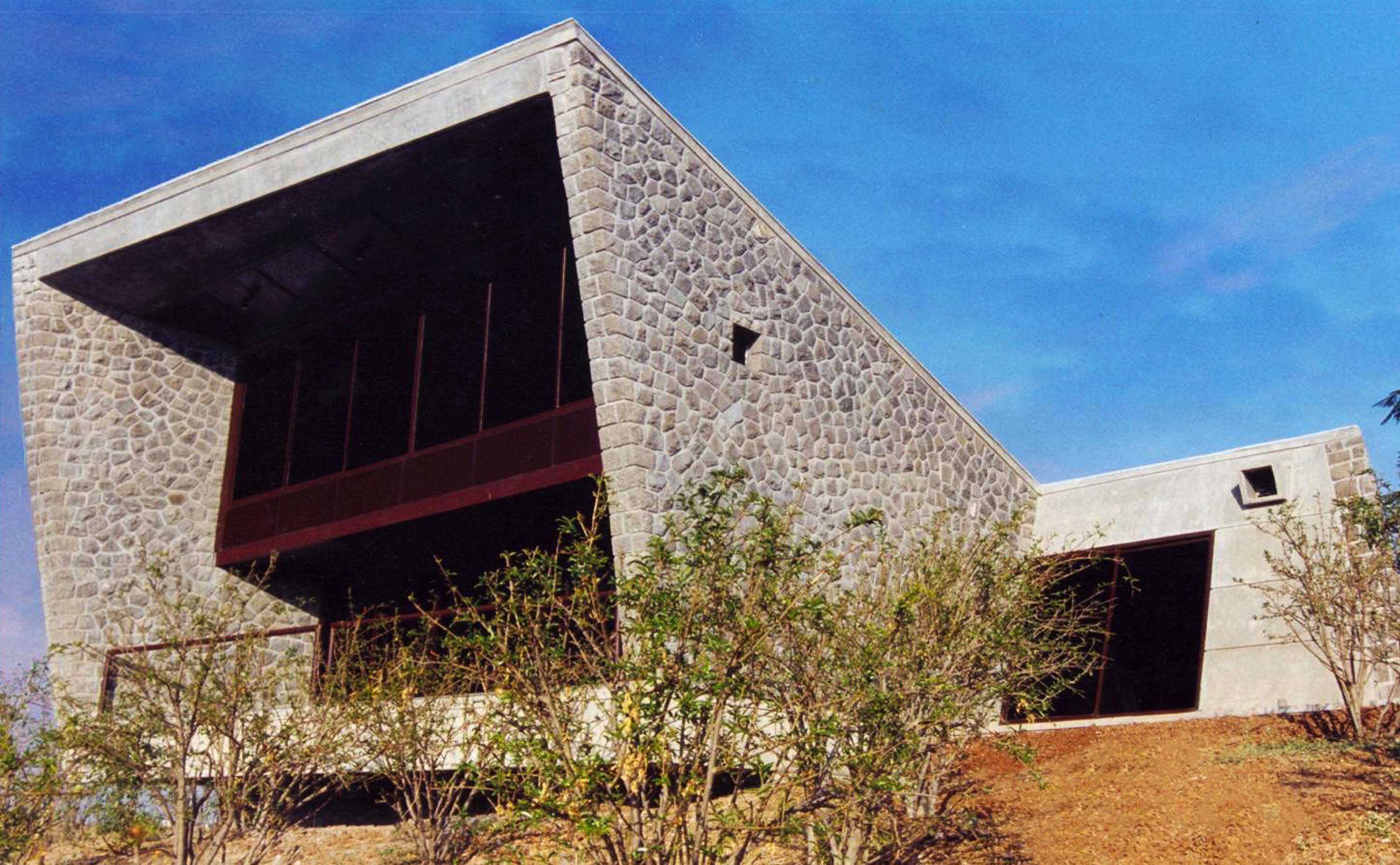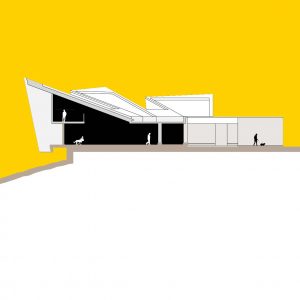 The design brief was to create a weekend house that would be multifunctional with a lounge, dining room, kitchen , two bedrooms with attached bathroom and verandah.
The design brief was to create a weekend house that would be multifunctional with a lounge, dining room, kitchen , two bedrooms with attached bathroom and verandah.
The. Site was selected, such that, the terrain slope down gently towards a meandering stream, which cut through a shallow valley. The location commands interesting views all around. In order to exploit all the facets of landscape the plan evolved as a fan shape capturing each view in different directions.
A linear circulation spine holds the entire geometry together, while the radiating walls enclose the functional spaces. The difference in heights between the corridor and the living areas creates interest and provides a visual balance between the building volumes. One wall of each shape angles out further to ensure visual privacy between the spaces, while shielding successive spaces.
The spirit of exterior flows inside, in terms of style articulation and the rustic, yet contemporary ambience . The lucid detailing lends a structural clarity, very much like the building itself. The amalgamation of location available materials with simple , modest and cost effective interior creates the perfect setting for the weekend retreat . The build has a purist expression where each material performs to its obvious structural potentials
The landscape too, has been designed to merge and meld with the farmland on which the farmhouse is set. Many interesting details of symbolism and iconography have been incorporated, into the landscaping and paving to make it a ‘process of discovery’ as one walks in and around the farmhouse. For instance the cast-n-situ concrete paving has impressions of the plan and a section of the building to help orient the visitor; pug- mark motifs and leaves contribute to telling an interesting story; while traditional elements like the ‘ pata varavanta’ , the ‘ukhal’ outside the kitchen and the ‘ Tulsi vrindavan’ in the arrival court add meaning to the context, Thus celebrating playfulness and joy in nature in tranquil settings.
























